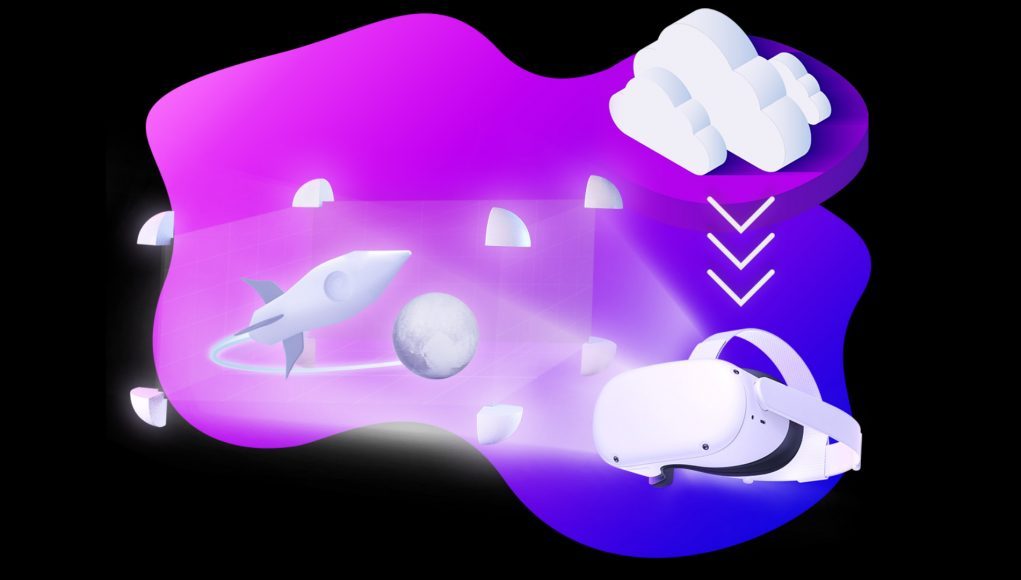PlutoSphere is a new cloud streaming platform in beta that lets Quest users play PC VR games without requiring a gaming rig—a big investment if you’re looking to play SteamVR titles like Half-Life: Alyx. Developers Pluto VR have been teasing it for the past few months, however now Quest owners will be able to finally see if it’s up to snuff via SideQuest.
PlutoSphere essentially lets you play your own games from Steam, the Epic Games Store, or the Oculus PC app—basically any app store you can install—all without needing a gaming computer capable of playing those graphically-intense titles.
The process is this: download PlutoSphere via SideQuest, have either a Quest or Quest 2, a 50 Mbps Internet connection, and a WiFi 6 router capable of 5 GHz. If you’ve never used SideQuest before, the unofficial Quest app store requires a few hoops to jump through. Check out our how-to guide to get started.
The download is free, however time allotment with the virtual gaming rig is measured in tokens. During its Early Access period each user starts with a limited supply of tokens automatically each day, however if you want to keep connected you’ll have to buy tokens via the PlutoSphere token store to continue.
All info is wiped from the virtual rig once you’re finished with a session, which means you’ll have to download all of your games there again when you start back up. The virtual computer boasts PC specs (and likely network specs) that would put any home rig to shame though, packing a Intel Xeon Platinum 8259CL CPU@ 2.50 GHz, NVIDIA Tesla T4, and 32GB RAM.
“Getting to Early Access on SideQuest has been a significant milestone for us and our community. We couldn’t have done it without our Plutoneers: our dedicated early adopters and testers,” said Forest Gibson, Co-founder of Pluto.
We haven’t had a chance to try out PlutoSphere ourselves, however it’s currently sitting at a [3.8/5] rating on SideQuest. Many users have reported acceptable latency levels, something that can make or break any cloud gaming service.
This is especially true for VR since it requires input latency measured around 10-20 milliseconds to be unnoticeable by the user. We’ll be trying out PlutoSphere is the coming days to see just what it’s made of, so check back soon.







